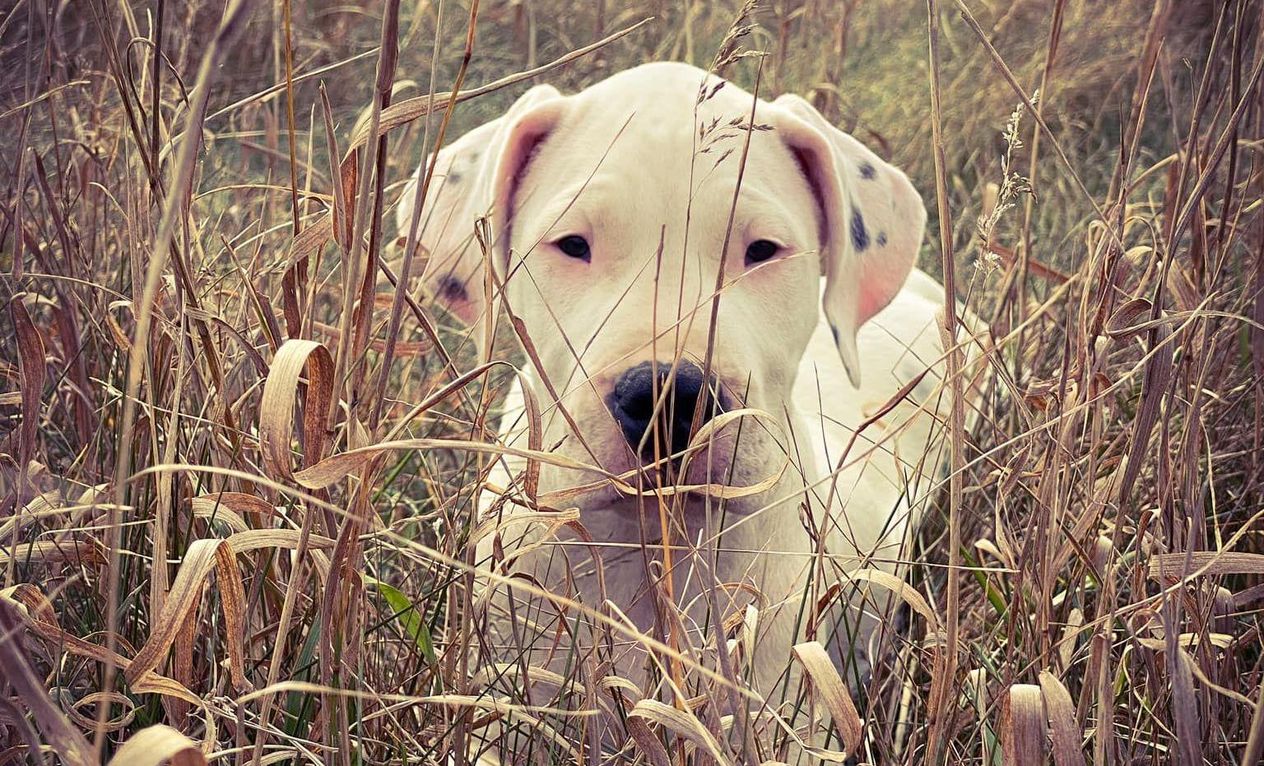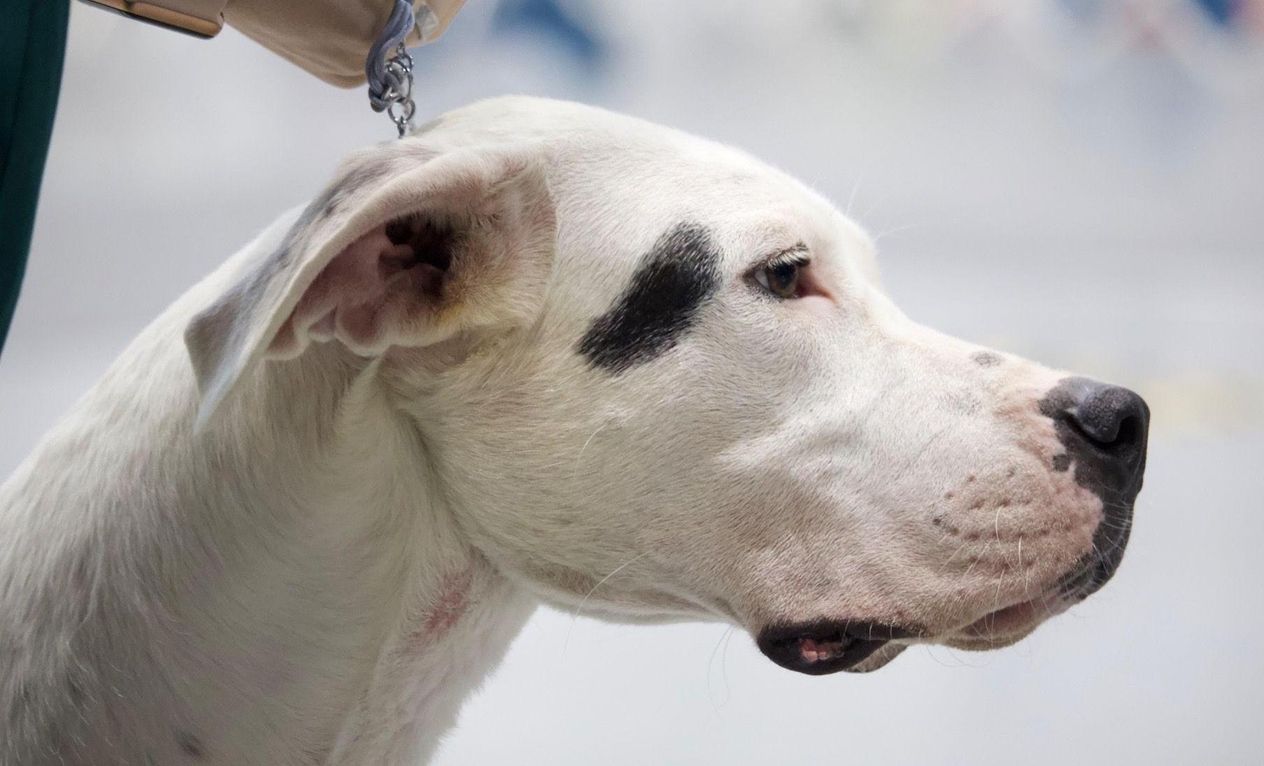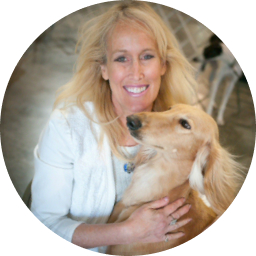Get to know
Dogo Argentinos

Veterinarian reviewed
The Dogo Argentino (Dogo for short) is a sleek protective breed that is not for beginners–but is all too often acquired by people who are not ready to cope with a dog with such a strong body and personality
Browse available puppies
Connect with reputable breeders to find the dog of your dreams
At a glance
High Energy
Energy level
4/5
Minimal Maintenance
Grooming
1/5
Extra Large
Size
Protective, tough
Temperament
9-15 years
Lifespan
Quick to Learn
Training
4/5
Low Vocality
Barking
2/5
At a glance
Energy level
High Energy
Grooming
Minimal Maintenance
Size
Extra Large
Temperament
Protective, tough
Lifespan
9-15 years
Training
Quick to Learn
Barking
Low Vocality
Why people love the breed
People love Dogos because of their sleek, athletic physique and their loyal and protective nature.
Appearance
The Dogo is magnificent: imposing, athletic, confident, and with a glistening sleek white coat.
Grooming
The Dogo’s grooming requirements are minimal.
Storm Dogos & Country Corgis
Breed temperament and characteristics
If one word describes the Dogo, it’s courageous. Other words would be protective, loyal, affectionate, and playful.
Exercise
Dogos are large, athletic dogs and need lots of room to exercise. They need at least an hour a day of exercise.
K&B Southern Oregon Argentino Dogos
Training
Dogos are willing to please, but they are also independent.
Diet and nutrition
Most Dogos do well on high-quality commercial foods and need nothing special beyond that.
De La Citra Dogo Argentino
Health issues
The Dogo Argentino Club of America is proactive concerning Dogo health. They suggest parents be tested for a variety of possibly hereditary problems before breeding.
Lifespan: 9 to 15 years.
Hip dysplasia
Common in large breed dogs, this complex condition involves both genetic and environmental factors and arises when the head of the femur doesn’t fit in the pelvic socket, causing arthritis and lameness. No genetic test is available to date, therefore, the recommended screening test is x-rays.
Elbow dysplasia
Found more often in larger breeds, this is a condition in which the elbow joint develops inappropriately, causing arthritis and lameness. No genetic test is available to date, therefore, the recommended screening test is x-rays.
Congenital deafness
As with many predominantly white dogs, Dogos have a high frequency of congenital deafness. It is recommended to perform the BAER hearing test.
Other health issues
The national breed club also suggests testing parents for thyroid disease, ocular conditions, and cardiac abnormalities.
History
One of the few Argentinian breeds, the Dogo Argentino is a fairly newer breed that was purposefully created within about 20 years after inception.
About the author
Canine specialist, Caroline Coile, Ph.D., is the author of 34 dog books, including the top-selling Barron's Encyclopedia of Dog Breeds. She’s written thousands of magazine and web articles about dogs. She specializes in canine science, health, breeds and competitions. Caroline has won 20 national dog-writing awards, and was a 2015 Inductee into the Dog Writers Association of America Hall of Fame.
Veterinarian reviewed
Dr. Nate Ritter, DVM is the Veterinary Medical Director at Good Dog. He earned his Bachelor of Science in Biology from Lafayette College and his Doctor of Veterinary Medicine degree from Virginia-Maryland College of Veterinary Medicine. He is a member of the American Veterinary Medical Association, New York State Veterinary Medical Society, the Veterinary Medical Association of New York City, and the Society for Theriogenology. Additionally, he is a USDA-accredited veterinarian.
Breed Scorecard
Characteristics and temperament
Affectionate with family
4
Watchdog level
5
Playfulness
3
Adaptability
2
Social needs
3
Temperament
Protective, tough
Intelligence
4
Good with other dogs
2
Good with cats or other pets
2
Friendly with strangers
1
Good as a service dog
2
Good for apartments
1
Barking level
2
Appearance
Height
24-26"
Size
Extra Large
Colors
White
Coat texture
Smooth
Coat length
Short, close-fitting
Training
Trainability
4
Exercise
Exercise needs
4
Exercise time
About 1 hour daily
Mental exercise needs
3
Favorite activities
Schutzhund, protection sports, hiking
Grooming
Grooming needs
1
Brushing frequency
Monthly
Needs professional grooming?
No
Drooling level
2
Health issues
Hip dysplasia
Elbow dysplasia
Congenital deafness
Other health issues
Other
Bred for
Big game hunting
Country of origin
Argentina
Popularity level
3
FAQs
On Good Dog, you can search for Dogo Argentino puppies or dogs in rescues and shelters. Adopting a Dogo Argentino from a shelter or rescue is generally less expensive than buying a puppy from a breeder with ethical practices. Across the United States, there are dedicated rescues that specialize in specific breeds and may even help transport a Dogo Argentino dog to you from another part of the country. Although it can be more cost-effective, adopting the exact breed you're looking for is typically more difficult than working with a responsible breeder. Learn more about adopting a dog from a shelter or rescue.
A Dogo Argentino is primarily comprised of breeds such as the Cordoba Fighting Dog, Great Dane, Bull Terrier, and Boxer. It was developed in Argentina in the 20th century for big-game hunting.
Dogo Argentinos typically weigh between 88 to 100 pounds.
The Dogo Argentino is a large, muscular dog with a short, white coat, a broad head, and a confident expression.



